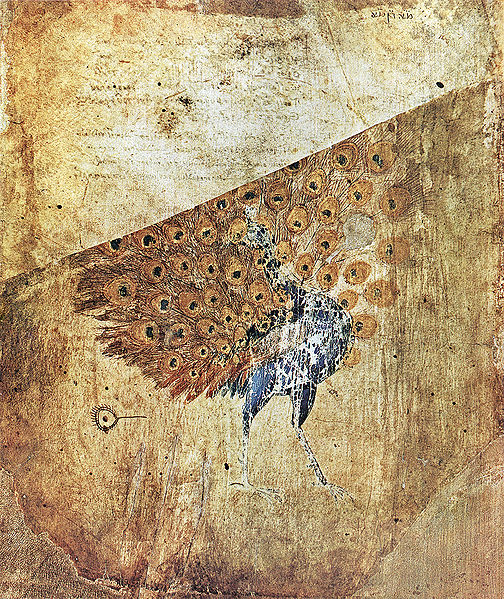Science is a rigorous, systematic endeavor that builds and organizes knowledge in the form of testable explanations and predictions about the world. Modern science is typically divided into three major branches: the natural sciences, which study the physical world; the social sciences, which study individuals and societies; and the formal sciences, which study formal systems, governed by axioms and rules. There is disagreement whether the formal sciences are science disciplines, as they do not rely on empirical evidence. Applied sciences are disciplines that use scientific knowledge for practical purposes, such as in engineering and medicine.
The Plimpton 322 tablet by the Babylonians records Pythagorean triples, written in about 1800 BCE
Plato's Academy mosaic, made between 100 BCE to 79 AD, shows many Greek philosophers and scholars
The first page of Vienna Dioscurides depicts a peacock, made in the 6th century
Drawing of the heliocentric model as proposed by the Copernicus's De revolutionibus orbium coelestium
The scientific method is an empirical method for acquiring knowledge that has characterized the development of science since at least the 17th century. The scientific method involves careful observation coupled with rigorous scepticism, because cognitive assumptions can distort the interpretation of the observation. Scientific inquiry includes creating a hypothesis through inductive reasoning, testing it through experiments and statistical analysis, and adjusting or discarding the hypothesis based on the results.
Flying gallop as shown by this painting (Théodore Géricault, 1821) is falsified; see below.
Muybridge's photographs of The Horse in Motion, 1878, were used to answer the question of whether all four feet of a galloping horse are ever off the ground at the same time. This demonstrates a use of photography as an experimental tool in science.
A famous example of discovery being stumbled upon was Alexander Fleming's discovery of Penicillin. One of his bacteria cultures got contaminated with mould in which surroundings the bacteria had died off; thereby the method of discovery was simply knowing what to look out for.







